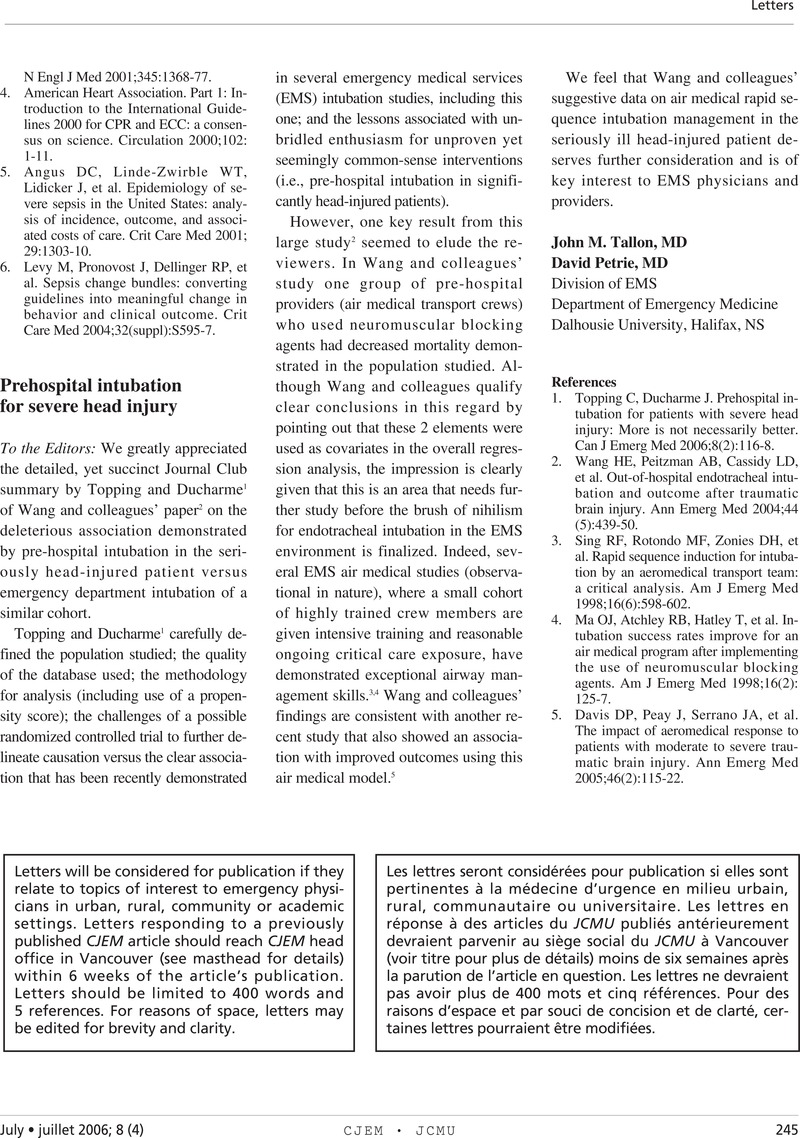Crossref Citations
This article has been cited by the following publications. This list is generated based on data provided by Crossref.
Khan, Afrasyab
Zafar, Hasnain
Naeem, Syed Nadir
and
Raza, Syed Ahsan
2010.
Transfer delay and in-hospital mortality of trauma patients in Pakistan.
International Journal of Surgery,
Vol. 8,
Issue. 2,
p.
155.



